Presentation of 3-4 experiments using different methods of investigating.
(Oct 22,2024)
I searched for plush toy models on 3Dsky and selected the top forty as a set.
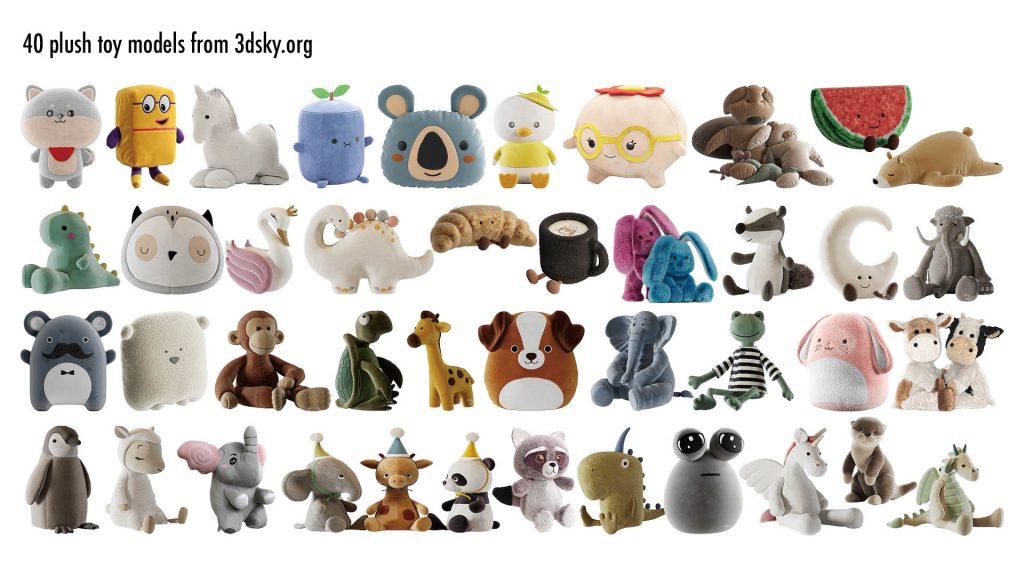
My first method is classification.
I began by categorizing these plush toys based on their physical characteristics.
First, in terms of species, the majority are animals, but there are also food items and other miscellaneous categories.
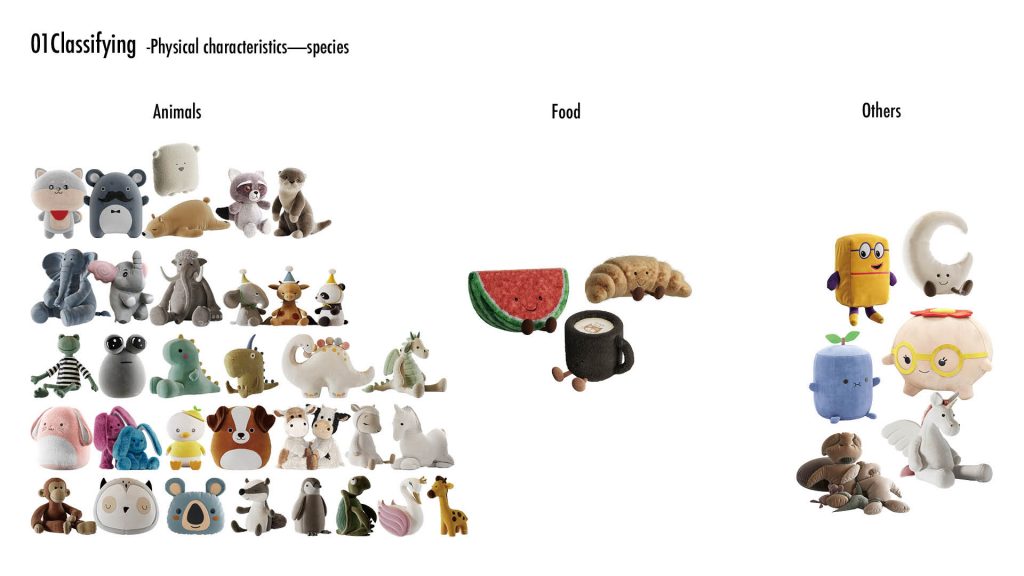
Then, I classified them by color, dividing them into different color schemes. On the left are the cooler tones, while on the right are the warmer tones.
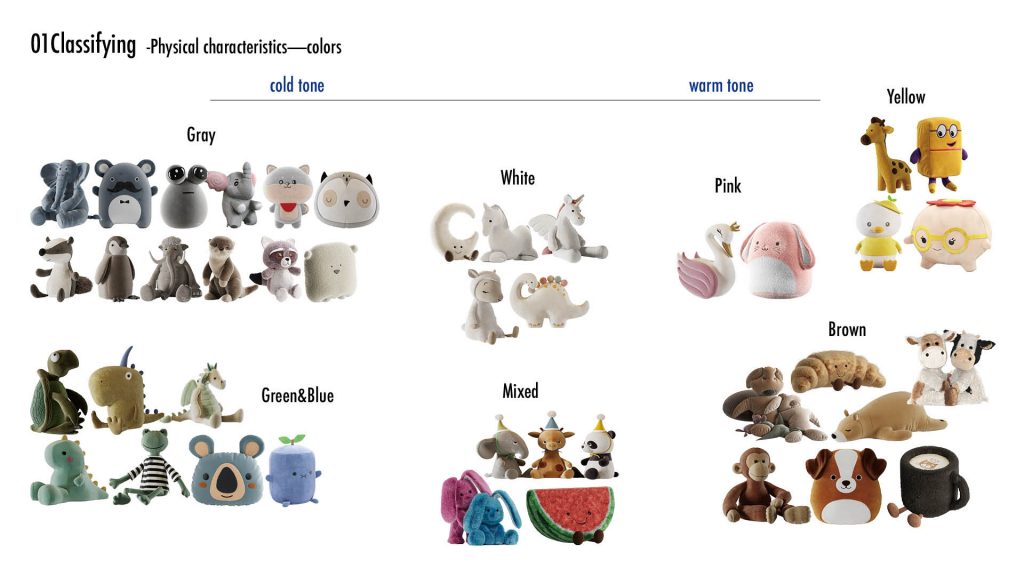
Next, I looked at their clothing. Some of the plush toys are dressed, some have accessories, and others wear nothing.
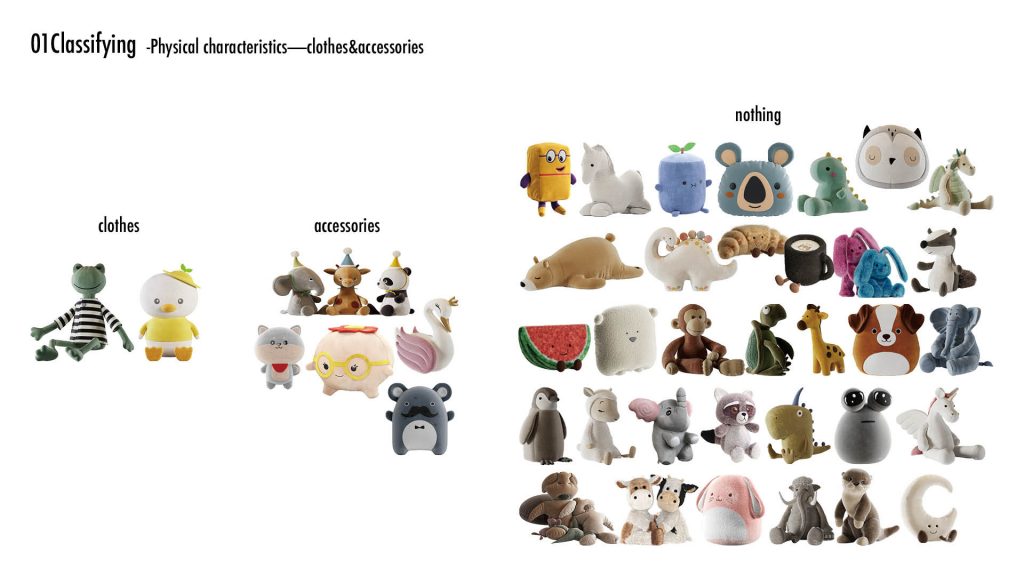
Lastly, I categorized them by their emotional characteristics. Since plush toys are often used as companions, I noticed that their facial expressions vary. I classified them based on these expressions, such as smirk , smiles, shy looks, and confused and so on.
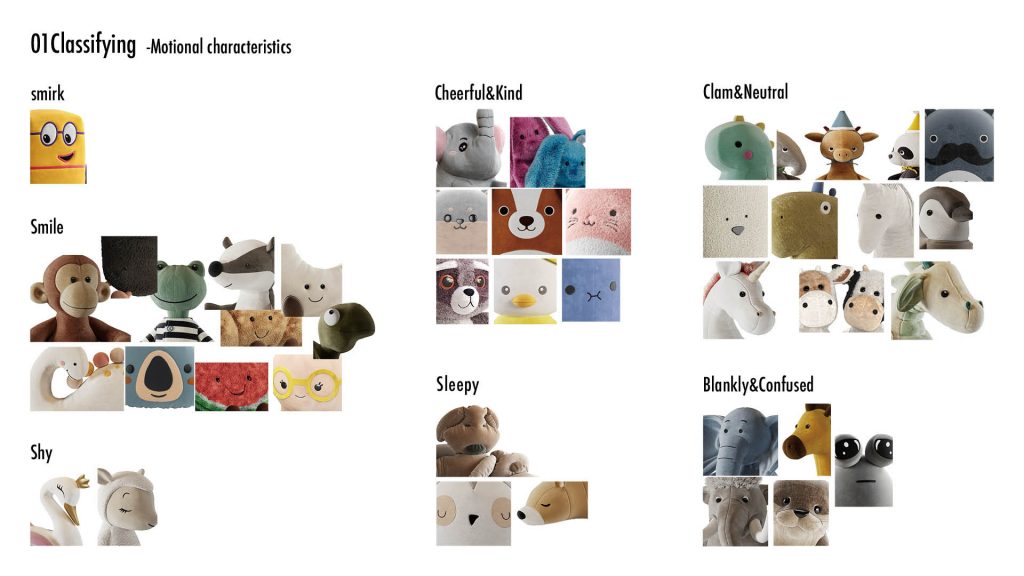
The second method is sequencing.
I noticed that each model on 3Dsky has both comments and likes. While these are direct feedback for the creators of the plush toys, they are also evaluations of the toys themselves. This made me wonder if I could establish a “likability score” for the plush toys, so I collected this data.
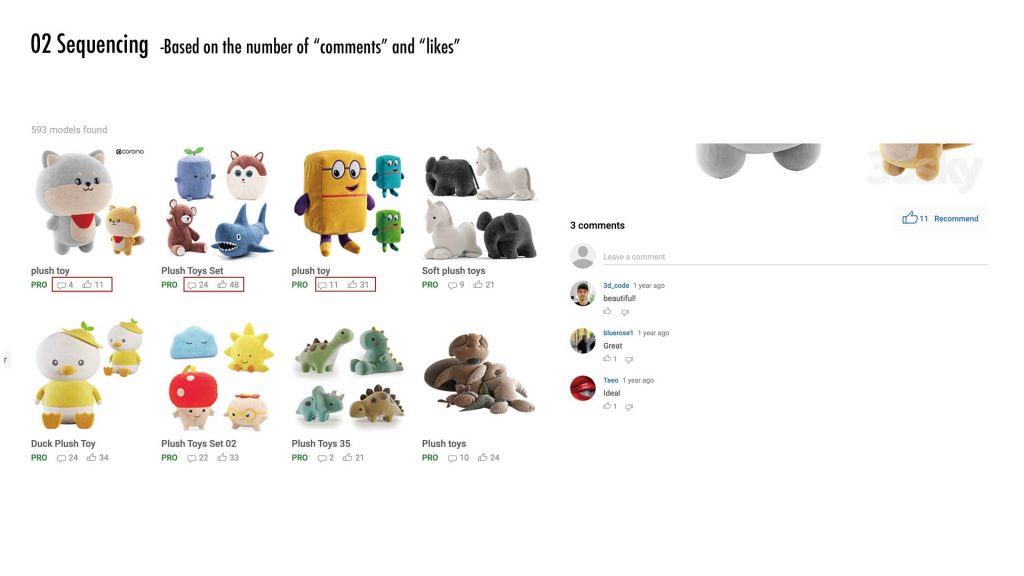

I found that most of the comments were positive, so I designed the popularity score formula as the sum of the number of comments and likes. I then organized this data in an Excel sheet to rank the toys.
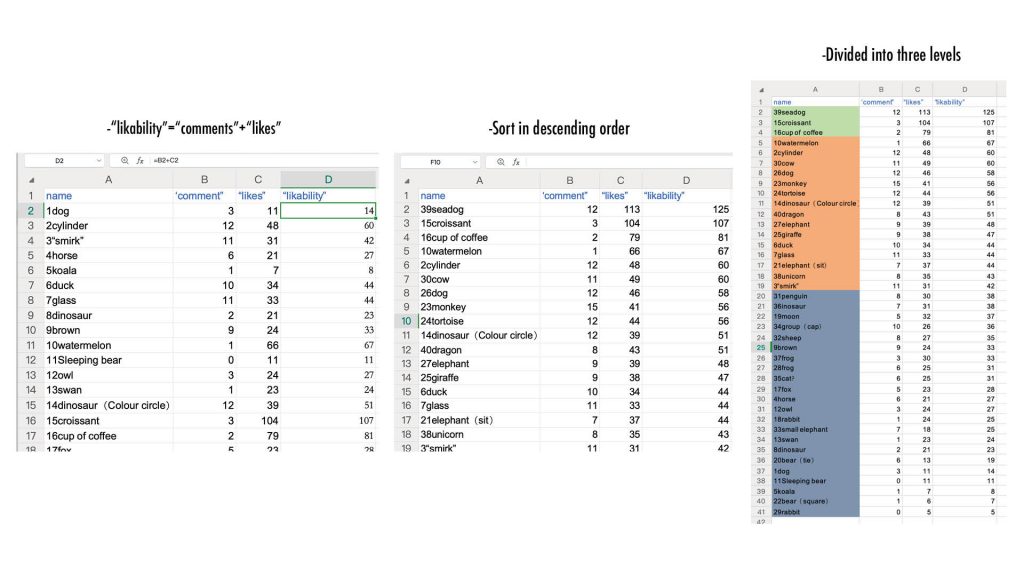
Based on this, I divided them into three levels: the top, moderate popular, and low popularity. I visualized this by placing them in a pyramid chart.
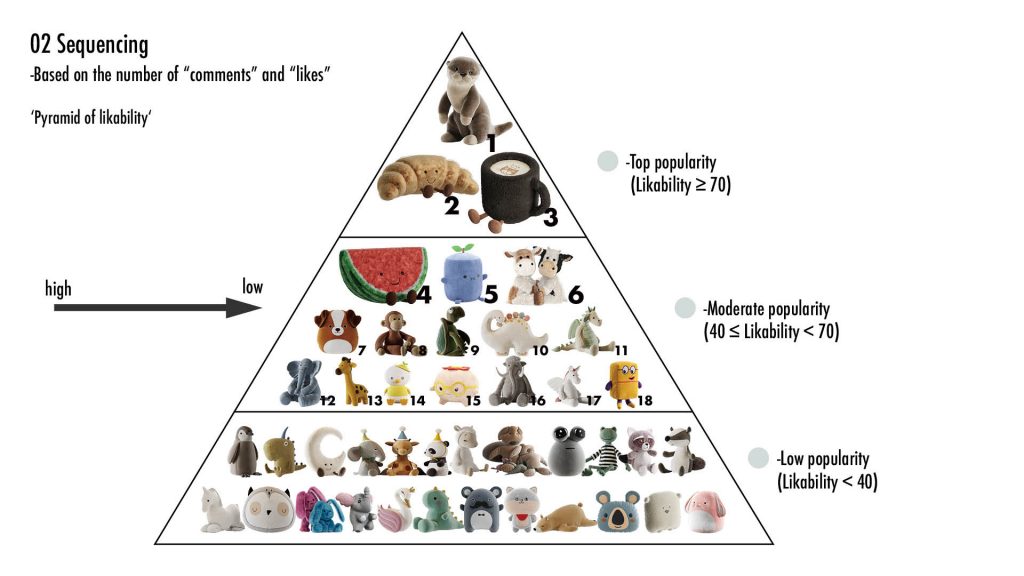
This reminds me of the talent show. Contestants are usually ranked in terms of audience votes, namely popularity , and then they are divided into ABCD classes. So, I applied the same idea to these plush toys.
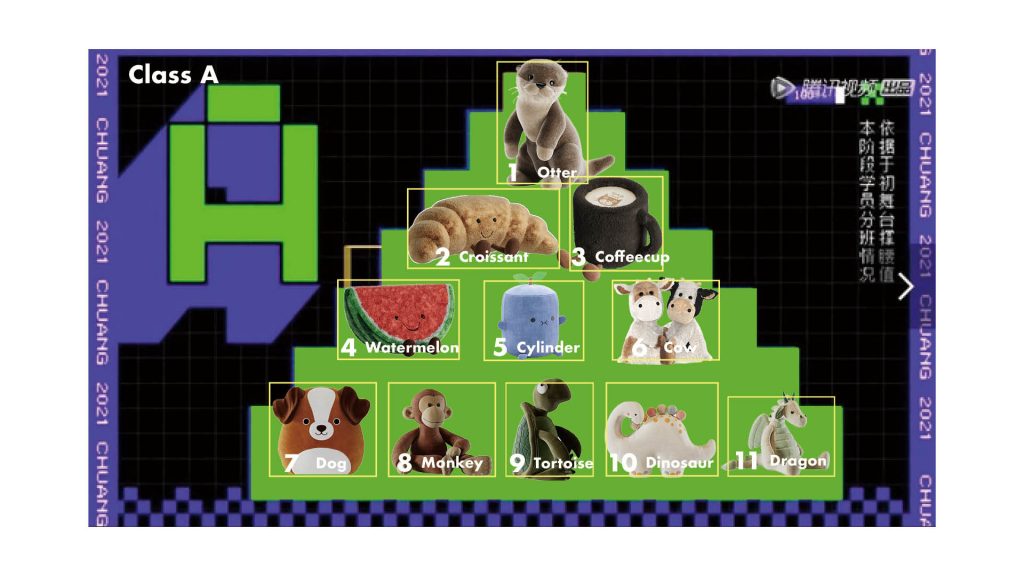
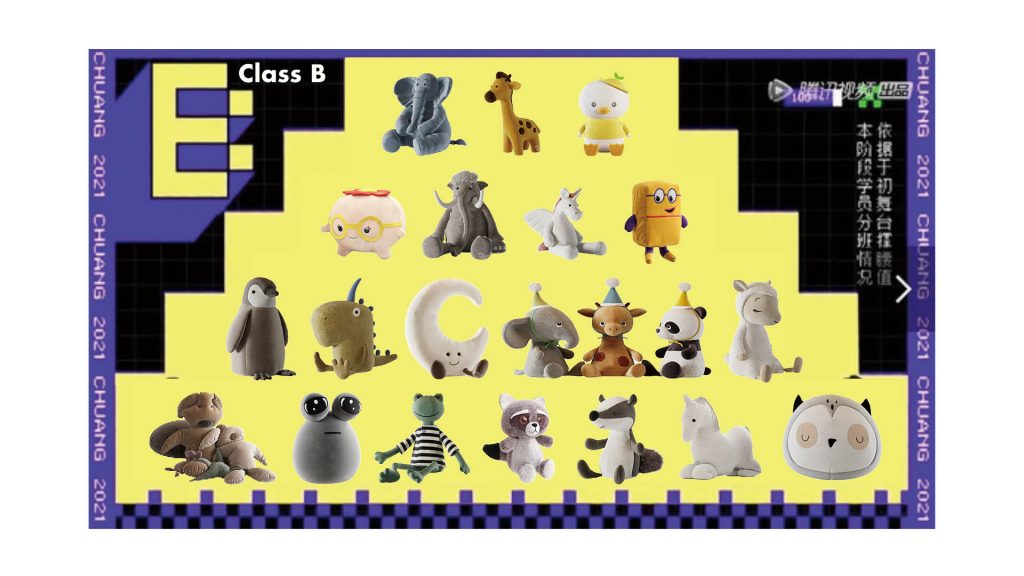
The third method is captioning.
While reviewing the comments under each plush toy, I noticed same words are repeated. This gave me the idea of creating word clouds. A word cloud can highlight key or central words in a text, also like a set of labels.
In everyday life, People are often labeled. This made me wonder—what if we applied these labels to plush toys? Would people see these toys differently because of the labels?
So, I collect the comments and create a word cloud for each plush toy.
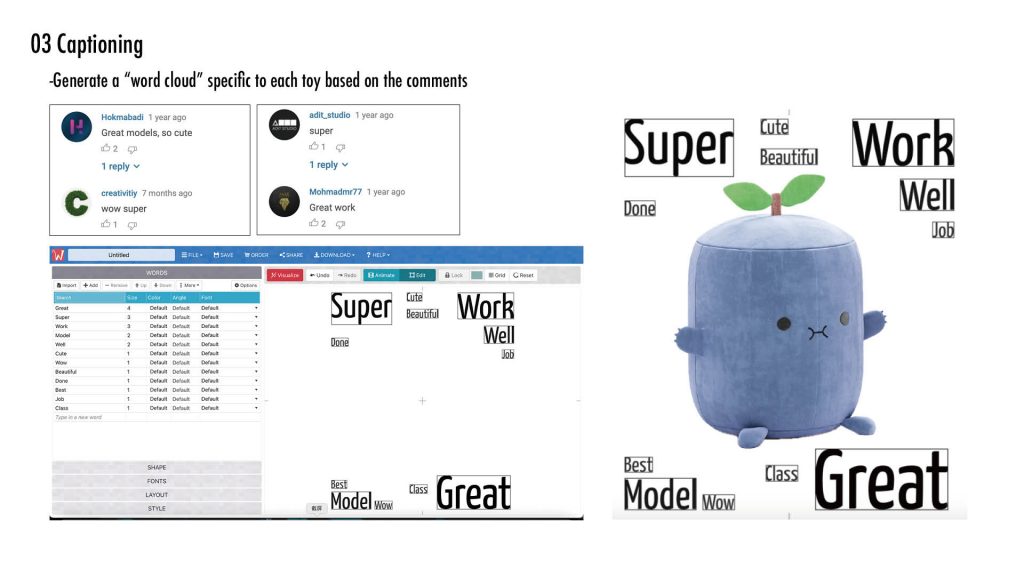
However, some plush toys received no comments or only a few. For example, in this group, there are no repeated words, so every word appears in the same size. Based on this, I categorized the toys according to the number of levels of the word.
I only created word clouds for the top twenty plush toys.
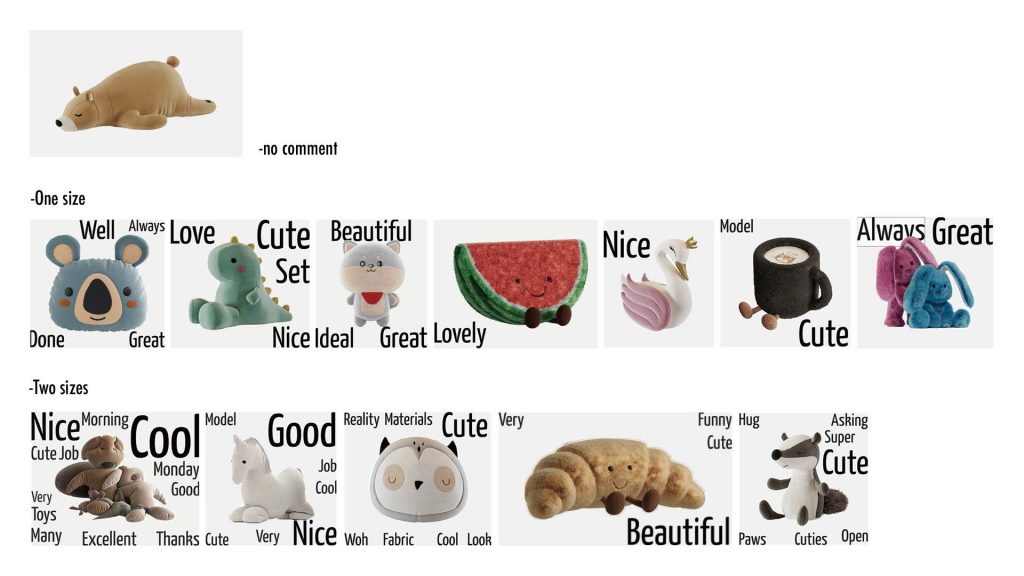
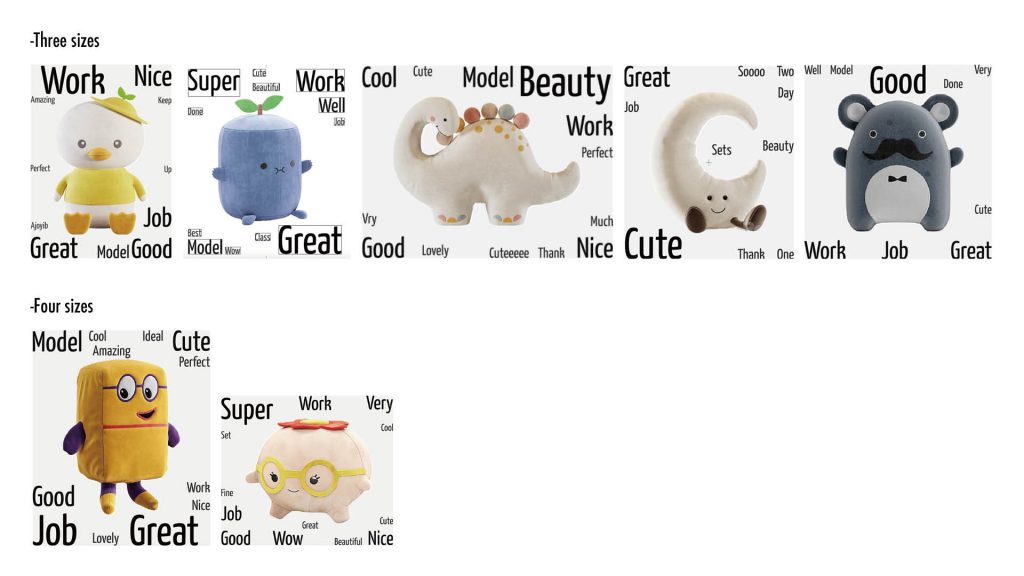
Leave a Reply